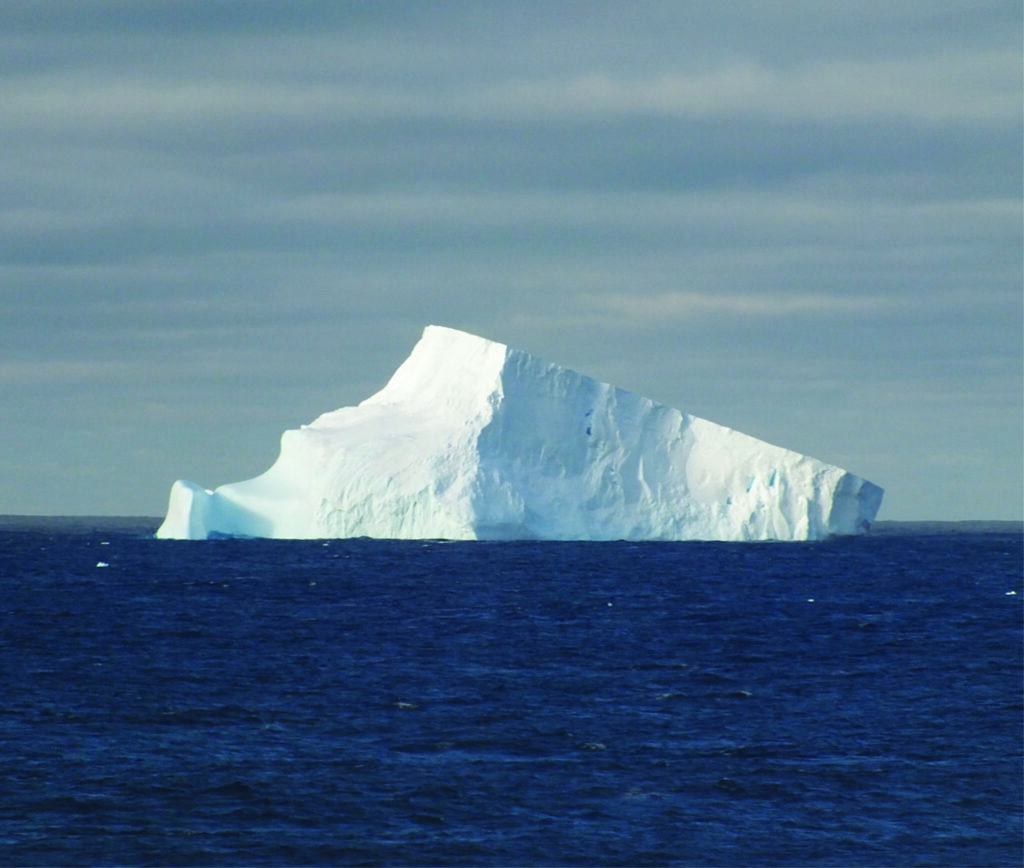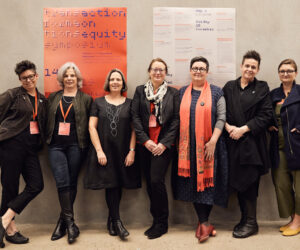Lorne Sculpture Biennale’s inaugural conference announced
In March 2018, the sixth Lorne Sculpture Biennale (LSB) hosts its inaugural conference, Creating Utopia, a three-day exploratory journey investigating the 2018 LSB theme Landfall, with speakers from across Australia and overseas reflecting powerfully upon the intersections of art, culture and the natural environment.
Two keynote and 10 invited speakers – conservationists, visual artists, architects, Aboriginal elders, and academics – reflect on issues of environmental degradation, processes of social and environmental transformation and regeneration, from a diverse and thought-provoking range of viewpoints.
‘The inaugural ‘Creating Utopia’ conference will reflect on the green revolution – bigger than the industrial revolution and happening faster than the digital revolution. Expert speakers and paper presenters will discuss issues relating to climate change; facing uncertain global futures and protecting our planet by taking control, being prepared, and offering solutions for long-term impacts. The conference will hear the voices of artists, architects and environmentalists, who offer innovative and well-researched future directions to the world’s mounting problems,’ – conference coordinator and Lorne Sculpture Biennale President, Lindy Joubert.
Keynote speakers:
Joss Brooks is a restoration ecologist who grew up in Tasmania and has worked with the community of Auroville – a unique, experimental township in Tamil Nadu in southern India – since the 1970s. In his keynote address, Remembering the Future Garden, Brooks discusses his role in the establishment of Pitchandikulam, where 60 eroded acres of Auroville green belt were successfully restored, further developments such as a medicinal plant conservation park, and restoration work including a 12-acre garbage dump in North Chennai and a controversial 350-acre wetland site at the Adyar estuary.
Mona Doctor-Pingel is an Indian architect who has been based in Auroville since 1995. Her keynote address, Journeying to Oneness through architecture in Auroville, South India, addresses natural and built landscapes found in the unique social utopia that is Auroville, with an emphasis on experimental building techniques using local materials and craft principles inspired by biology.
Invited speakers:
Boon Wurrung elder and Boon Wurrung Foundation founder N’Arweet Carolyn Briggs has worked with numerous communities for over 40 years, and was awarded the National Aboriginal Elder of the Year in 2011 by the National NAIDOC Committee. Briggs speaks about the role the foundation has played in cultural research, restoring language and the promotion and maintenance of culture, with an emphasis on connecting urban Indigenous youth with Indigenous knowledge.
Melbourne-based Principal Designer at Gregory Burgess Architects, Dr Greg Burgess discusses architecture as a social, healing and ecological art. Burgess’ international reputation has been established through a significant award-winning body of work, which features housing; community, cultural (including Indigenous), educational, health, religious, commercial and exhibition design and urban design projects. He has taught and exhibited around the world.
Co-authors of the 2016 book Lifestyled: Health and Places, David Mah and Leire Asensio Villoria talk on the built environment, lifestyle and health. Both are senior lecturers in Urban Design and Architecture at the University of Melbourne, following roles as lecturers at the Harvard Graduate School of Design, where they worked on the Health and Places Initiative, a collaboration between the Harvard GSD and the Harvard T.H. Chan School of Public Health, studying the links between the built environment and health outcomes.
Esther Charlesworth is a Professor in the School of Architecture and Design at RMIT University, the Academic Director of the new RMIT Master of Disaster, Design and Development degree [MoDDD], and the founding Director of Architects without Frontiers (AWF). Since 2002, AWF has undertaken over 42 health, education and social infrastructure projects in 12 countries for vulnerable communities, and has been described by ABC radio broadcaster Phillip Adams as “destined to develop into one of the greater forces of good on this battered planet”.
John Fien is Professor of Sustainability in the Innovation Leadership programme of RMIT University, where he is responsible for supporting research on social, environmental and economic sustainability across the Business and Design and Social Context Portfolios.
Janet Laurence is a Sydney-based artist who exhibits nationally and internationally. Her practice examines our relationship to the natural world, and has been exhibited widely, including as an Australian representative for the COP21/FIAC, Artists 4 Paris Climate 2015 exhibition, and an artist in residence at the Australian Museum. Her work Matter of the Masters is currently on show at the AGNSW.
Ray Green is a Professor of Landscape Architecture and Environmental Planning at the University of Melbourne. His multidisciplinary research is concerned with environment-behaviour issues related to land development and conservation, climate change and health.
Alecia Bellgrove is a Senior Lecturer in Marine Biology and Ecology with Deakin’s School of Life and Environmental Sciences, and a marine ecologist with botanical and zoological training. Her research focuses on the role of habitat-forming seaweeds in ecological systems, their life history dynamics, and the impacts of anthropogenic disturbances such as sewage effluent and climate change.
Shoso Shimbo has a Master of Arts in Japanese Studies and a Master of Fine Art and PhD in Education. He has further qualifications as a garden designer from the esteemed Japan Horticultural Society, specialising in Japanese gardens. He is a director of the International Society of Ikebana Studies and is highly regarded throughout Australia for his remarkable creations as an Ikebana master. His work in this field and that as an environmental artist seeks to harness the life force of nature. His sculptural works have featured in some of the nation’s major contemporary art exhibitions, and a new work Sea Snakes: Trash Vortexes is a feature of Sculpturescape at LSB 2018.
The Lorne Sculpture Biennale, Australia’s most prestigious sculpture festival, is a free, vibrant festival that enriches and transforms the stunning Lorne foreshore and surrounds over three weekends in March, becoming an unmissable destination for arts lovers everywhere. Under the creative direction of curator Lara Nicholls in her incoming biennale, the LSB in 2018 explores the theme Landfall, presenting major works and new commissions from 41 artists devoted to pressing global issues of nature and endangerment.
Abstracts for the LSB 2018 Creating Utopia conference must be received by Thursday 15 February. Registrations are now open. Full details are available on the LSB website.
The LSB 2018 Creating Utopia conference is proudly supported by Deakin University.
What: Imagining and Making Futures: Art, Architecture and Sustainability
When: Thursday 22- Sunday 25 March, 2018
Where: Lorne Hotel, Lorne





